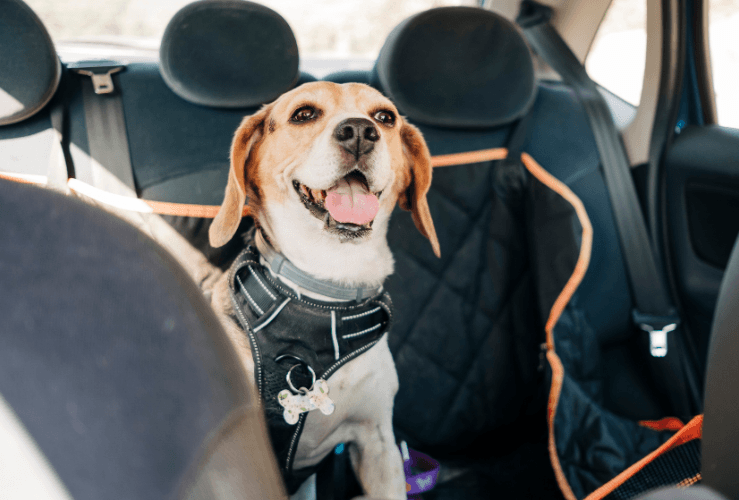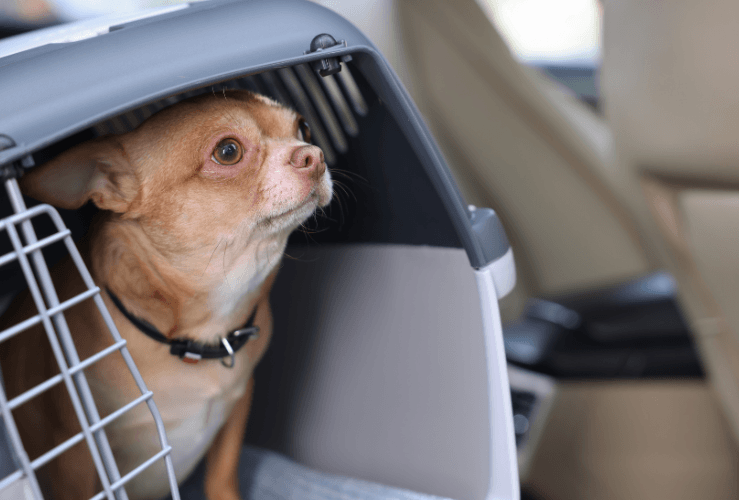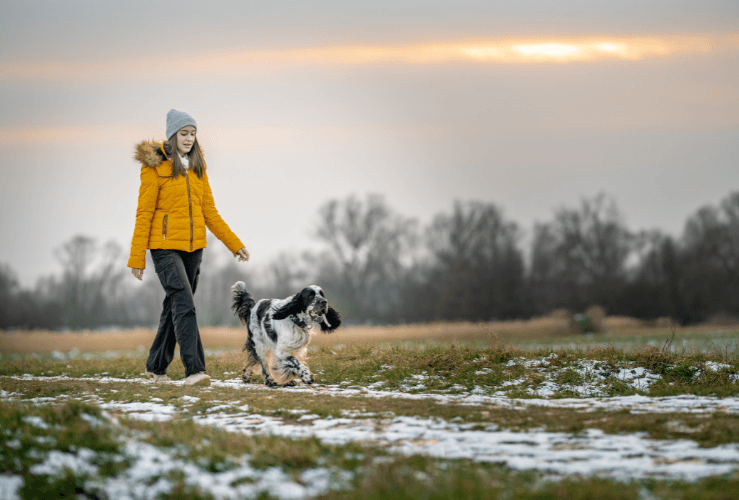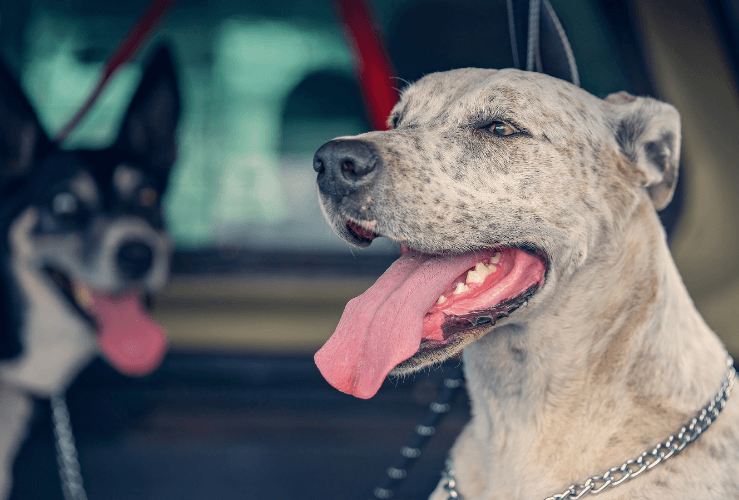Travelling with a pet in a car for the first time can be daunting. Will they get anxious? Will they distract the driver? Will they need more toilet breaks? How can you keep them safe in the event of a collision?
Here we look at how to travel with a dog in a car, while ensuring they are comfortable and safe.
How to travel with a dog in a car: The basics
It goes without saying your dog will need plenty of water, food, and toilet bags.
Taking a lead (and a back-up in case you lose it), is also essential.
Naturally, in summer your pet's hydration needs will increase. The same goes if they are especially active, or pregnant.
Transporting a dog in a car
It's safer if your dog is kept separate from passengers during a car journey. This ensures the dog doesn't move around too much - and importantly, they won't distract the driver.

Seat belt harness
In extreme situations, a dog may even cause a distraction that leads to a collision.
An unrestrained dog may also move violently across the cabin in the event of a crash, potentially injuring either themselves or the human occupants.
According to the Royal Society for the Prevention of Accidents, "At 30 mph …a 50lb (22.5 kg) border collie would be thrown forward with a force equivalent to almost nine 12 stone men."
A good solution to this risk is a dog seatbelt harness - specially designed to restrain a dog while travelling in a car.
It means they can have enough room to stay comfortable, but cannot roam around the cabin. And in the event of a collision, they won’t injure themselves or any humans.
Additionally, they will be less able to run off or lash out in the event of a crash.
A seat belt harness fits around the chest and neck. Ensure it is not too tight.
Dog guard
A dog guard is a special pet travel safety panel that is usually installed between the passenger area and the boot area - containing the dog.
A car dog guard prevents the animal from moving around the cabin, and functions more to protect passengers rather than the dog - although it should help prevent your pet being flung forward in the event of a collision.

Dog travel crate/cage
Investing in a travel cage or pet carrier is another option for transporting a dog in a car. This also keeps pets and humans separate.
According to the RSPCA, when selecting a pet carrier, “Ensure that it has enough room to sit and stand up at full height, turn around easily and lie down in a natural position. You should also ensure that your dog is able to see out of the container and that there is enough ventilation and airflow. Suitable bedding should be placed on the floor to prevent the dog from slipping around during the journey.”
Opinions vary on whether or not dog crates are humane, but it really depends on the dog. Some get anxious in a confined space, while others are more relaxed in a pet carrier compared to travelling in the vehicle's cabin.

Regular stops for exercise
Check your route and look for areas where you can walk your dog.
According to RoSPA, "A minimum break of at least 15 minutes after every two hours of driving is recommended."
These regular exercises and fresh air pit-stops will help both pet and passengers feel good. And of course, regular stops mean plenty of opportunities for toilet breaks for all!
If your dog isn't used to being in rural areas, remember to keep them on a lead near livestock (especially during lambing season from February to April), ensure gates are closed, and keep to the marked paths.
Read the Countryside Code for more advice.
Making your dog feel comfortable
Transporting a dog in a car is all about comfort: bring their favourite toys, blanket, and snacks.
Familiar objects and smells will help them feel more "at home" and increase the chances of a relaxing trip.
Drive gently
Avoid braking, accelerating and turning sharply, as this may increase your pet's discomfort - or even cause an injury.
Tranquilisers
Perhaps you're travelling with your pet for the first time, or maybe your dog has exhibited nervous behaviour on previous car journeys.
If you believe an extended road trip could make your pet nervous (a situation that can create tension among passengers, too), then you might consider a tranquiliser.
You should speak to your vet about sedatives such as medetomidine, which acts to reduce noradrenaline, thereby relaxing your pet's mind and muscles.
For pets who suffer heightened anxiety while travelling, a tranquiliser could be a solution. However, you may be able to keep your dog relaxed with familiar toys and blankets - and snacks!
Signs of stress in a dog when travelling in a car
A dog that exhibits generalised anxiety may find travelling in a car even more worrying.
Signs your dog is feeling anxious include painting, constantly scanning the environment, frenzied movements and barking.
Some dogs don’t like the constant shifting of muscles necessary to maintain stability during turns, acceleration and braking. It's important to be aware of these signs so you can remedy them - be it with familiar toys, treats, or in some cases, sedatives or minimising car trips.

Never leave your dog in the car
Leaving your dog in the car is never a good idea - especially in summer months.
In extreme cases, high cabin temperatures can cause heat stroke - whereby the animal's body temperature rises beyond the normal range, potentially causing tissue and organ failure unless emergency veterinary care is administered swiftly. Brain damage can also result from heat stroke.
Additionally, dehydration can increase the chances of heatstroke.
In preference to being in a situation where you might need to leave your dog in your car, consider leaving them at home, where water, food and shelter are assured.




